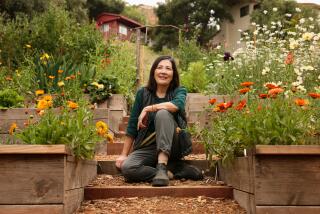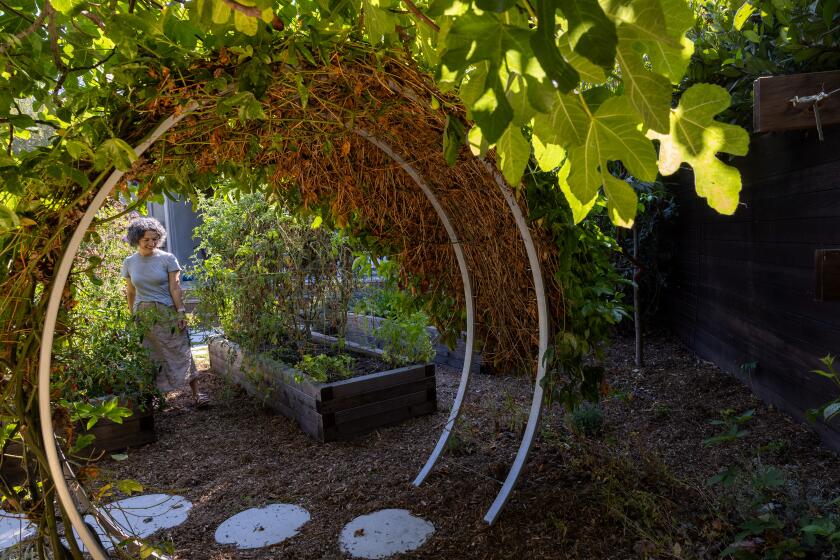OUTDOORS : Capturing a Garden’s Blooms
Maybe your flower garden doesn’t rival the ones adorning the covers of Better Homes and Gardens magazine. That’s no excuse not to capture your own home-grown color on film.
After spending so much time digging, planting and pulling weeds, photographing the brilliant results of your labor can be a rewarding experience.
And who knows? Maybe the same flair you’ve exhibited in growing beautiful blossoms will show itself in your photographs. Your garden variety snapshots could be upgraded to works of art, suitable for framing or sale.
All you need is someone to show you the way.
A walk through a garden with photographer Carol Leigh may be the answer. The Santa Ana-based photographer organizes workshops to help people improve their garden photography.
One of the most important factors in garden snapshots is the light source. Leigh recommends shooting on cloudy or overcast days, when the light is even, which eliminates harsh shadows.
Early morning is the best time to shoot flowers because they look fresh. Flowers look tired after a long day in the sun.
Leigh also suggests that you move in tight. If you’re taking pictures of a rose, don’t show the chain-link fence in the background. For close-up shots, she prefers using a 90 or 100-mm macro lens because it allows her to work farther away than a 50- or 55-mm macro. If there is a butterfly on a pedal, a longer focal length keeps her from hovering too close and scaring it off.
“I think what’s wrong with most pictures is that people are concentrating on the emotion of the moment and (their) camera is not capturing that same emotion, it’s capturing everything (in view),” says Leigh, 41. “As you progress as a photographer, you need to learn how to be disciplined and tighten up your pictures to eliminate the extraneous.”
A tripod is also helpful in photographing flowers. You need the camera to be stable to get the greatest amount of sharpness and depth-of-field at a slow shutter speed.
Leigh uses either Fujichrome 50 or 100 slide film. “The colors are terrific,” she said. “I always prefer slides, what you see is what you get. With print film, depending on the lab, your color could be off.”
If your photography starts to impress other people, consider entering the professional market. Leigh sells her photographs to greeting card makers, calendar companies and magazines. The “Photographer’s Market,” published by Writer’s Digest, lists thousands of buyers and offers advice on how to pedal your photographs.
“It gives you a real good clue as to who’s buying pictures, what format they are looking for and how much they are willing to pay,” Leigh said. “You also have to take the initiative and search out your own publications.”
Photographers looking to improve their flowery images can join Leigh as she leads a photo walk at Sherman Gardens in Corona del Mar on July 28. The flower photography workshop costs $15.
Other classes offered by Leigh include one at Mission Interiors in San Juan Capistrano on July 14 for $25 and a Back Bay Bird Walk in Newport Beach on Dec. 15 for $15. For more information, call (714) 744-6566.







